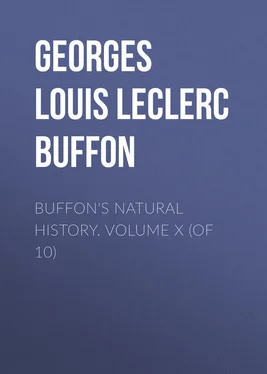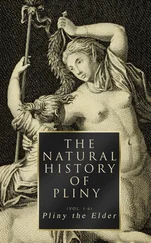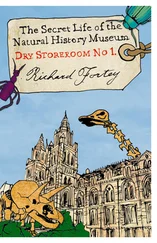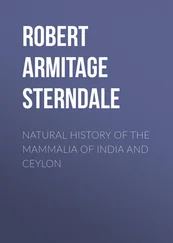Georges Buffon - Buffon's Natural History. Volume X (of 10)
Здесь есть возможность читать онлайн «Georges Buffon - Buffon's Natural History. Volume X (of 10)» — ознакомительный отрывок электронной книги совершенно бесплатно, а после прочтения отрывка купить полную версию. В некоторых случаях можно слушать аудио, скачать через торрент в формате fb2 и присутствует краткое содержание. Издательство: Иностранный паблик, Жанр: foreign_antique, foreign_prose, на английском языке. Описание произведения, (предисловие) а так же отзывы посетителей доступны на портале библиотеки ЛибКат.
- Название:Buffon's Natural History. Volume X (of 10)
- Автор:
- Издательство:Иностранный паблик
- Жанр:
- Год:неизвестен
- ISBN:нет данных
- Рейтинг книги:5 / 5. Голосов: 1
-
Избранное:Добавить в избранное
- Отзывы:
-
Ваша оценка:
- 100
- 1
- 2
- 3
- 4
- 5
Buffon's Natural History. Volume X (of 10): краткое содержание, описание и аннотация
Предлагаем к чтению аннотацию, описание, краткое содержание или предисловие (зависит от того, что написал сам автор книги «Buffon's Natural History. Volume X (of 10)»). Если вы не нашли необходимую информацию о книге — напишите в комментариях, мы постараемся отыскать её.
Buffon's Natural History. Volume X (of 10) — читать онлайн ознакомительный отрывок
Ниже представлен текст книги, разбитый по страницам. Система сохранения места последней прочитанной страницы, позволяет с удобством читать онлайн бесплатно книгу «Buffon's Natural History. Volume X (of 10)», без необходимости каждый раз заново искать на чём Вы остановились. Поставьте закладку, и сможете в любой момент перейти на страницу, на которой закончили чтение.
Интервал:
Закладка:
1 1 Nullum animal cui ungues adunci, gregatile esse perpendimus. Arist. Hist. Anim. Lib. i. Cap. 1.This observation, which was then confined to four or five species only, being all that were known in his time, is extended and verified over ten or twelve other species since discovered. Other carnivorous animals, such as the wolf, the fox, the dog, the jackal, and the isatis, whose claws are straight, go mostly in troops, and are all timid, and even cowardly.
By thus comparing every quadruped, and ranking each with its proper genus, we shall find, that the two hundred species of which we have given the history, may be reduced to a small number of families, or principal stems, from which it is not impossible all the others have derived their origin.
To place this reduction in a regular method, we shall observe that all the animals of the two continents, as well as all those peculiar to the Old World, may be reduced to fifteen genera, and nine solitary species. These genera are, first, the whole hoofed genus, properly so called, which includes the horse, the zebra, and the ass, with all the prolific and barren mules. 2. The large cloven-hoofed with hollow horns, as the ox and the buffalo, with their varieties. 3. The small cloven-hoofed animals with hollow horns, such as the sheep, the goat, the gazelle, the antelope, and every other species which participates of their nature. 4. The cloven-hoofed with solid horns, which are shed and renewed every year; this family contains the elk, the rein-deer, the stag, the fallow-deer, the axis, and the roe-buck. 5. The ambiguous cloven-hoofed, which is composed of the wild boar, and all the varieties of the hog, such as that of Siam, with a hanging belly, that of Guinea, with long ears, pointed and turned backwards, and that of the Canary islands with thick and long tusks, &c. 6. The very extensive race of digitated carnivorous animals with crooked and retractile claws, in which we must comprehend the panther, leopard, guepard, ounce, serval, and cat, with all their varieties. 7. The digitated carnivorous animals with straight and fixed claws, which include the wolf, fox, jackal, isatis, and the dog, with all their varieties. 8. The digitated carnivorous animals with fixed claws, and a pouch under their tails. This consists of the hyæna, civet, zibet, badger, &c. 9. The digitated carnivorous animals with long bodies, five toes to each foot, and the great toe, or thumb, divided from the rest; this genus is composed of the ferret, martin, pole-cat, weasel, sable, ichneumon, &c. 10. The numerous family of digitated quadrupeds which have two large incisive teeth in each jaw, and no bristles on their bodies; this contains the hare, rabbit, and every kind of squirrels, dor-mice, marmots, and rats. 11. The digitated quadrupeds, whose bodies are covered with spiny quills, as the porcupine and hedge-hog. 12. The digitated animals covered with scales, as the long and short-tailed manis, or scaly lizards. 13. The amphibious digitated genus, which includes the beaver, otter, musk-rats, walrus, and seals. 14. The four-handed genus, which comprehends the apes, baboons, monkeys, makis, loris, &c. 15. The winged quadrupeds, which includes bats, &c. with all their varieties. The nine detached species are the elephant, rhinoceros, hippopotamus, giraffe, camel, lion, tiger, bear, and mole, which are all subject to a greater or smaller number of varieties.
Of those fifteen genera, and nine detached species, seven genera, and two species are common to both continents. The two species are, the bear and the mole; and the seven genera are, 1. The great cloven-hoofed with hollow horns, for the ox is found in America, under the form of the bison. 2. The cloven-hoofed, with solid horns, for the elk exists in Canada, under the name of original; the rein-deer, under that of caribou; and stags, fallow-deer, and roe-bucks, are found in all the provinces of North America. 3. The digitated carnivorous animals with fixed claws; for the wolf and fox are found in the New World as well as in the Old. 4. The digitated animals with long bodies, as the weasel, martin, and pole-cat, are met with in America as well as in Europe. 5. We find also in America, part of the digitated genus with two large incisive teeth in each jaw, as the squirrels, marmots, rats, &c. 6. The digitated amphibious genus, as the walrus, seal, beaver, and otter, exist in the North of the New Continent. 7. The winged genus exist also in America, as the bat and vampire.
There remains, therefore, only eight genera, and five detached species, which are peculiar to the Old Continent. These eight genera are, 1. The whole-hoofed, properly so called, for neither the horse, ass, zebra, nor mule, were met with in the New Continent. 2. The small cloven-hoofed beasts with hollow horns; for sheep, goats, gazelles, or antelopes existed in America. 3. The family of hogs; for the species of wild boar is not to be found in America; and although the pecari, and its varieties, are related to this family, yet they differ in a sufficient number of remarkable characters to justify their separation. 4. It is the same with carnivorous animals with retractile claws; we do not meet with either the panther, leopard, guepard, ounce, or serval, in America; and although the jaguar, couguar, ocelot, and margai, seem to belong to this family, there is not, one of these species of the New World found in the Old, nor one of the Old to be met with in the New. 5. The same remark may be applied to the digitated quadrupeds whose bodies are covered with prickles; for although the coendou and the urson approach very nigh to this genus, nevertheless, these species are very different from those of the porcupine and hedge-hog. 6. The digitated carnivorous genus with fixed claws, and a pouch under the tail; for the hyæna, civets, and the badger, do not exist in America. 7. The four-handed genus; for neither apes, baboons, monkeys, nor makis, have ever been seen in America. The sapajous, sagons, opossums, &c. although quadrumanous, yet they essentially differ from those of the Old Continent. 8. The digitated genus whose bodies are covered with scales; for none of the scaly lizards are found in America, and the ant-eaters, to whom they may be compared, are covered with hair, and differ too much from the scaly lizards to be considered of the same family.
Of the nine detached species, seven, namely, the elephant, rhinoceros, hippopotamus, giraffe, camel, lion, and tiger, are found only in the Old World; and two, viz. the bear and mole, are common to both continents.
Читать дальшеИнтервал:
Закладка:
Похожие книги на «Buffon's Natural History. Volume X (of 10)»
Представляем Вашему вниманию похожие книги на «Buffon's Natural History. Volume X (of 10)» списком для выбора. Мы отобрали схожую по названию и смыслу литературу в надежде предоставить читателям больше вариантов отыскать новые, интересные, ещё непрочитанные произведения.
Обсуждение, отзывы о книге «Buffon's Natural History. Volume X (of 10)» и просто собственные мнения читателей. Оставьте ваши комментарии, напишите, что Вы думаете о произведении, его смысле или главных героях. Укажите что конкретно понравилось, а что нет, и почему Вы так считаете.











